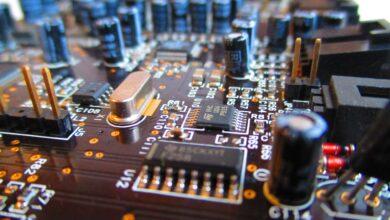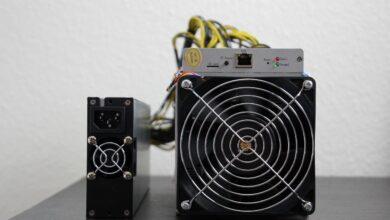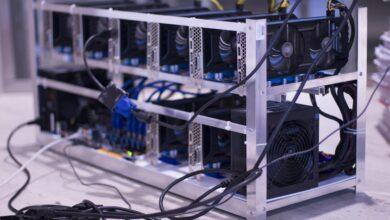Unlocking FPGA Mining – Techniques and Insights

In the ever-evolving landscape of cryptocurrency mining, the quest for efficiency and performance drives innovation. Among the myriad of technologies that have emerged, Field-Programmable Gate Arrays (FPGAs) stand out as a compelling solution. This article embarks on a thorough examination of FPGA mining technology, exploring its intricate mechanisms and unraveling the nuances that set it apart from traditional mining methods.
The exploration of FPGA technology reveals a sophisticated interplay between hardware programmability and computational efficiency. Unlike their ASIC counterparts, which are rigidly designed for specific algorithms, FPGAs offer a remarkable flexibility that allows miners to adapt their operations in response to changing market dynamics. This adaptability not only enhances the longevity of mining rigs but also positions FPGAs as a viable solution for those seeking to optimize their investments in the volatile world of cryptocurrency.
Our comprehensive analysis will delve into various techniques employed in FPGA mining, shedding light on the strategies that maximize hash rates while minimizing energy consumption. As we navigate through different FPGA architectures and their respective mining solutions, we will highlight the importance of understanding both the technical specifications and the economic implications of these technologies. Ultimately, this deep dive aims to equip miners–both seasoned and novice–with the knowledge necessary to make informed decisions in this complex arena.
Understanding FPGA Mining Basics
Field-Programmable Gate Arrays (FPGAs) represent a pivotal technology in the realm of cryptocurrency mining, offering a compelling alternative to traditional ASICs and GPUs. A thorough examination of FPGA mining basics reveals their unique architecture, which allows for customizable hardware solutions tailored to specific algorithms. Unlike fixed-function ASIC miners, FPGAs can be reprogrammed to optimize performance for different cryptocurrencies or evolving mining algorithms. This adaptability is particularly advantageous in an environment characterized by rapid technological advancements and fluctuating market demands.
The exploration of FPGA mining solutions necessitates an understanding of the operational principles underlying these devices. At their core, FPGAs consist of an array of programmable logic blocks and interconnects, enabling users to define their own digital circuits. This level of customization is key to achieving efficient mining operations. For instance, by fine-tuning the design of the circuitry to match the hashing function used by a particular blockchain, miners can significantly increase their hash rates while minimizing power consumption–a critical factor in profitability.
In-depth analysis of FPGA mining technology also highlights its efficiency compared to traditional methods. When examining power efficiency and performance per watt, FPGAs frequently outperform both ASICs and GPUs, particularly in scenarios where versatility is required. Moreover, FPGAs typically have a lower barrier to entry regarding initial investment costs when considering both the hardware and development time needed to implement effective mining strategies. Thus, for miners seeking a sustainable long-term solution, FPGAs present a compelling case.
A comprehensive analysis of FPGA mining techniques reveals the importance of software support and community involvement in this domain. The development of user-friendly frameworks and open-source tools has democratized access to FPGA mining capabilities, allowing even novice miners to engage with this technology effectively. Additionally, community-driven projects often lead to innovative solutions that enhance performance and usability. This collaborative spirit fosters an ecosystem where continuous improvement thrives, benefiting all participants.
Furthermore, the scalability of FPGA solutions cannot be understated. Given their modular nature, miners can easily expand their operations by adding more boards or upgrading existing ones without incurring substantial costs associated with replacing entire systems. This scalability provides a strategic advantage in adapting to the volatile cryptocurrency market, allowing miners to pivot swiftly in response to changing conditions or emerging opportunities.
In conclusion, delving into the intricacies of FPGA mining reveals a sophisticated landscape rich with potential. Through diligent examination and exploration of various techniques and solutions within this domain, one can appreciate how FPGAs are transforming the mining industry. As cryptocurrency continues to evolve, so too will the technologies supporting its infrastructure–FPGA mining stands at the forefront of this revolution, promising not only efficiency but also adaptability in an unpredictable environment.
Advantages of FPGA Compared to ASICs
In the rapidly evolving landscape of cryptocurrency mining, the choice of hardware plays a pivotal role in determining profitability and efficiency. Among the various options available, Field Programmable Gate Arrays (FPGAs) have emerged as a compelling alternative to Application-Specific Integrated Circuits (ASICs). This comprehensive analysis aims to explore the advantages of FPGA technology over ASICs, highlighting its flexibility, reconfigurability, and overall performance in cryptocurrency mining applications.
One of the primary advantages of FPGAs is their inherent adaptability. Unlike ASICs, which are designed for specific algorithms and cannot be modified post-manufacture, FPGAs can be reprogrammed to accommodate new mining algorithms or to optimize existing ones. This characteristic allows miners to pivot quickly in response to fluctuating market conditions or advancements in mining techniques, thus ensuring sustained profitability. The ability to update FPGA configurations without substantial hardware changes offers a significant edge over the rigid nature of ASIC devices.
Moreover, an in-depth exploration of FPGA mining technology reveals that FPGAs often exhibit superior energy efficiency compared to their ASIC counterparts. While ASICs may outperform FPGAs on a raw computational basis for specific tasks, FPGAs can be optimized for power consumption, leading to lower operational costs over time. This balance between performance and energy efficiency is critical in an industry where electricity costs are a major determinant of profitability. A thorough examination of the power metrics associated with both technologies underscores this advantage, suggesting that FPGAs may provide a more sustainable long-term solution for miners.
In addition to their energy efficiency and adaptability, FPGAs also support a wider range of hashing algorithms than ASICs. As different cryptocurrencies gain traction and new consensus mechanisms emerge, the ability to mine various coins using a single FPGA unit becomes invaluable. This versatility not only enhances the potential revenue streams for miners but also mitigates the risks associated with investing in hardware that may become obsolete as market dynamics shift. Comprehensive analysis indicates that miners equipped with FPGAs can diversify their operations more effectively than those relying solely on ASICs.
The economic implications of choosing FPGA technology over ASICs extend beyond mere flexibility and efficiency; they also touch upon issues of supply chain stability and hardware availability. Given that ASIC manufacturing is often subject to shortages due to high demand and production constraints, miners utilizing FPGAs may enjoy greater access to components and less volatility in equipment pricing. This stability is essential for miners looking to scale their operations without facing prohibitive barriers related to hardware acquisition.
In conclusion, a thorough exploration of FPGA mining solutions reveals numerous advantages over traditional ASIC devices. From adaptability and energy efficiency to versatility in algorithm support and supply chain resilience, FPGAs present compelling reasons for miners to consider this technology as a viable alternative. As the cryptocurrency landscape continues to evolve, it will be crucial for stakeholders to remain informed about emerging technologies like FPGAs that can enhance their operational capabilities and overall competitive advantage.
Top FPGA Hardware Options for Mining
In the ever-evolving landscape of cryptocurrency mining, a thorough examination of FPGA (Field-Programmable Gate Array) technology reveals a myriad of solutions that cater to both efficiency and versatility. Unlike traditional ASIC miners, FPGAs offer the unique advantage of reconfigurability, allowing miners to adapt their hardware to new algorithms as they emerge. This characteristic makes FPGAs particularly appealing in an environment where the profitability of mining operations can fluctuate dramatically based on network conditions and algorithmic changes.
Diving deeper into the exploration of FPGA hardware options, one finds a comprehensive array of choices ranging from low-cost entry-level devices to high-end models designed for serious miners. For instance, the Xilinx Virtex series stands out due to its robust performance and flexibility. With its ability to handle multiple hashing algorithms simultaneously, it provides an unparalleled edge for those looking to maximize their mining output. Similarly, Intel’s Stratix line presents formidable competition, emphasizing energy efficiency while maintaining high processing power–an essential aspect in today’s competitive mining arena.
An in-depth exploration of FPGA mining techniques reveals that successful miners often employ customized logic designs tailored to specific cryptocurrencies. This tailored approach not only enhances hashing efficiency but also significantly reduces power consumption when compared to standard GPU or ASIC setups. By leveraging the inherent programmability of FPGAs, miners can implement advanced techniques such as parallel processing and pipelining, which are critical for optimizing overall performance and ensuring sustained profitability.
Finally, a comprehensive analysis of the future trajectory of FPGA mining technology suggests that as cryptocurrencies continue to proliferate and diversify, the demand for adaptable and efficient mining solutions will only grow. The ongoing advancements in FPGA design and manufacturing processes promise even more powerful and cost-effective options for miners. Thus, as we navigate this complex and dynamic field, it becomes evident that FPGAs will remain at the forefront of mining innovation, providing a sophisticated toolset for both seasoned professionals and newcomers alike.
Concluding Thoughts on FPGA Mining Technology
As we reach the culmination of our exploration into the intricate world of FPGA mining technology, it becomes apparent that this innovative approach offers a plethora of solutions tailored to the ever-evolving landscape of cryptocurrency mining. In our thorough examination, we’ve uncovered not only the technical prowess inherent in FPGA devices but also their potential to revolutionize how we perceive efficiency and profitability in the mining arena.
The comprehensive analysis of FPGA mining techniques reveals a bright future marked by adaptability and performance optimization. These devices, with their unique capacity for reconfiguration, allow miners to pivot swiftly in response to changes in algorithms or market conditions–a distinct advantage over traditional ASIC systems. This flexibility fosters a deeper engagement with the technology, encouraging miners to innovate and refine their strategies continually.
Key Insights and Future Directions
- Technological Advancements: The ongoing evolution of FPGA technology promises even greater computational power and energy efficiency.
- Diverse Applications: Beyond just cryptocurrency, FPGAs are poised to impact various sectors, expanding their utility beyond mining.
- Community Engagement: The collaborative nature of the FPGA community fosters knowledge sharing and innovation, driving forward both individual and collective success.
- Cost-Effectiveness: As initial investments decrease and expertise grows, FPGA mining becomes increasingly accessible to a broader range of participants.
In this in-depth dive into FPGA mining technology, we’ve seen how an analytical approach can illuminate pathways previously obscured by complexity. Each technique explored serves as a testament to human ingenuity–an embodiment of our relentless pursuit of excellence in this digital frontier. The future is bright for those willing to embrace these advanced solutions; it beckons us toward a more sustainable and prosperous mining ecosystem.
As we forge ahead, let us carry forth the insights gleaned from our comprehensive examination. With every byte computed and every algorithm optimized, we are not merely participating in a financial endeavor; we are contributing to the very fabric of technological progress. It is with this understanding that we step boldly into the future of FPGA-based mining.





